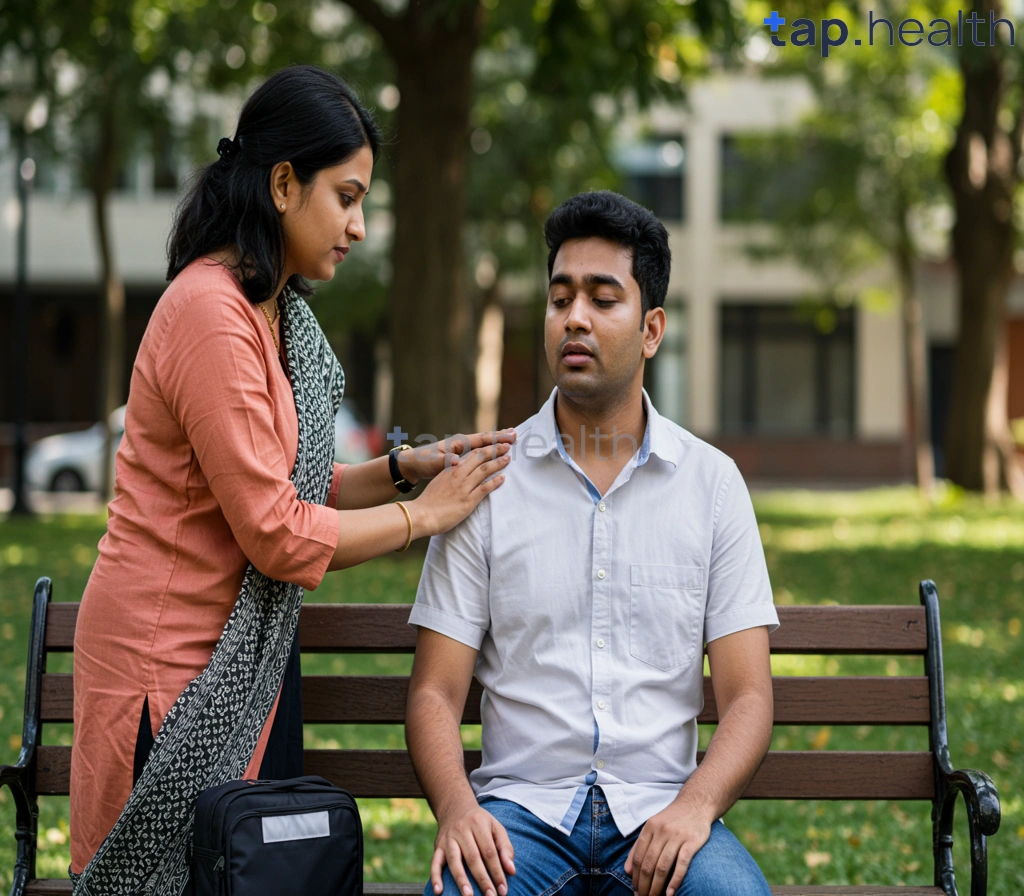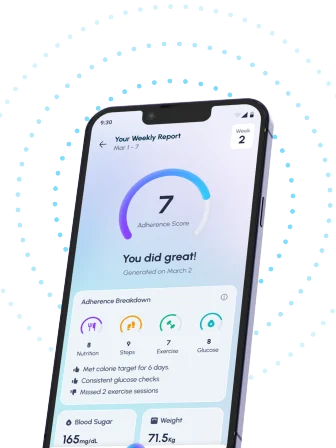Table of Contents
- Science Saturday: Revolutionary Cell Therapy for Diabetes?
- Diabetes Breakthrough: Replacing Cells, Restoring Health
- Understanding Cell Replacement Therapy for Diabetes
- Science Saturday: Is Cell Therapy the Diabetes Cure?
- New Cell Therapy for Diabetes: A Detailed Guide
- Frequently Asked Questions
- References
Are you ready for a game-changer in diabetes treatment? This week’s Science Saturday focuses on a truly groundbreaking development: breakthrough cell replacement therapy for diabetes. For years, managing this condition has meant a daily struggle, but new research offers a potential path towards a healthier future. We’ll delve into the exciting possibilities of this revolutionary therapy and explore its implications for millions living with diabetes. Get ready to learn more about this significant leap forward in medical science!
Science Saturday: Revolutionary Cell Therapy for Diabetes?
Could a revolutionary new cell therapy finally offer a game-changing solution for diabetes in India and other tropical countries? The possibility is generating significant excitement within the scientific community. While lifestyle changes, such as diet and exercise, can significantly impact diabetes risk—up to 80% of Type 2 diabetes cases can be delayed or prevented through lifestyle changes (learn more)—this emerging therapy offers a potential breakthrough for those already living with the condition.
Understanding the Promise of Cell Therapy
This innovative approach focuses on regenerating or replacing damaged insulin-producing cells in the pancreas. For individuals with Type 1 diabetes, this could mean a potential cure, eliminating the need for daily insulin injections. For those with Type 2 diabetes, it could significantly improve insulin production and reduce reliance on medication. The research is still in its early stages, but the implications for millions struggling with diabetes in India and across tropical regions are immense. Many in these regions face unique challenges accessing healthcare and managing their condition effectively.
Challenges and Opportunities
The development and implementation of this cell therapy will require substantial investment in research and infrastructure, particularly in developing nations. However, the potential benefits, including reduced healthcare costs and improved quality of life, are substantial. Successful implementation also hinges on widespread education and awareness campaigns focusing on early detection and lifestyle modifications. Early intervention, combined with advancements in cell therapy, holds the key to minimizing the impact of diabetes in India and throughout tropical climates. For those interested in learning more about completely reversing their diabetes, check out How to Reverse Diabetes Permanently.
A Call to Action
Let’s support research initiatives and advocate for improved access to healthcare in our communities. Early detection and proactive lifestyle changes, alongside future breakthroughs in cell therapy, offer a powerful combination in the fight against diabetes. Learn more about diabetes prevention and management strategies relevant to your region. Considering how technology can play a part in managing diabetes, read more on How Can New Technological Advances Improve Diabetes Lifestyle?. Engage in conversations about the potential of cell therapies within your community, driving awareness and hope for a healthier future.
Diabetes Breakthrough: Replacing Cells, Restoring Health
Did you know that a staggering 50% of diabetes cases worldwide remain undiagnosed? This alarming statistic, highlighted by the International Diabetes Federation, underscores the urgent need for advancements in diabetes treatment, particularly in regions like India and other tropical countries where the disease burden is high. A significant leap forward has occurred with a new cell replacement therapy showing promising results.
A New Hope for Diabetes Management
This groundbreaking therapy focuses on replacing damaged or malfunctioning cells responsible for insulin production. Traditional treatments often manage symptoms, but this innovative approach aims to address the root cause of type 1 and certain types of type 2 diabetes in India and other tropical nations. By restoring the body’s natural ability to regulate blood sugar, it offers the potential for improved health outcomes and a better quality of life for millions. The success of this therapy is especially crucial given the high prevalence of undiagnosed diabetes in these regions, where access to healthcare might be limited.
Impact on Tropical and Indian Populations
The impact of this cell replacement therapy could be transformative, particularly for those living in resource-constrained settings within India and other tropical countries. Early detection and access to advanced therapies are vital to curbing the rise of diabetes-related complications. The potential for improved diabetes management, reduced long-term complications, and enhanced healthcare accessibility presents a significant opportunity to improve public health within these regions. This breakthrough offers a renewed hope for managing this chronic condition effectively. For those interested in exploring alternative approaches, How AI Can Help You Reverse Diabetes offers insights into cutting-edge technologies.
Take Action: Know Your Risk
Given the high rate of undiagnosed diabetes, regular health check-ups are crucial, especially if you have a family history of the disease or fall into a high-risk category. Early detection is key to effective management and preventing serious health issues. Talk to your doctor today about your risk and explore available testing options. This proactive approach is vital for improving diabetes management, particularly in regions where awareness and access to healthcare may be limited. While this new cell therapy is promising, you might also be interested in learning more about the possibilities discussed in Reversing Diabetes in 21 Days: Is It Possible?
Understanding Cell Replacement Therapy for Diabetes
Diabetes, a significant global health concern, disproportionately affects a large segment of the population aged 20-64 years, representing 61% of all those living with the condition according to the IDF Diabetes Atlas. In tropical and Indian countries, where diabetes prevalence is notably high, this age demographic represents a considerable burden on healthcare systems and individual well-being. This underscores the urgent need for innovative treatments like cell replacement therapy.
How Cell Replacement Therapy Works
This promising approach focuses on replacing damaged or malfunctioning insulin-producing cells (beta cells) in the pancreas. In type 1 diabetes, the immune system destroys these cells, leading to insulin deficiency. Cell replacement therapy aims to restore this crucial function, potentially offering a functional cure, or at least significantly improved management of the condition. Several approaches are under investigation, including the transplantation of pancreatic islet cells or the generation of new beta cells from stem cells.
Potential Benefits and Regional Considerations
The potential benefits of successful cell replacement therapy are transformative. It could eliminate or drastically reduce the need for daily insulin injections or other medications, significantly improving the quality of life for millions. For individuals in Indian and tropical countries, this could mean less reliance on expensive medications and improved access to effective diabetes management. However, access to and affordability of such advanced therapies remain crucial challenges that need addressing through robust healthcare policies and infrastructure development. Maintaining a healthy immune system is also vital, and you can learn more about boosting immunity while managing diabetes.
Moving Forward
While still under development, cell replacement therapy offers substantial hope for the future of diabetes management, particularly in regions like India and other tropical countries with high prevalence rates among the working-age population (20-64 years, representing 61% of all those with diabetes). Continued research and investment are vital to overcome existing challenges and bring this transformative technology to those who need it most. The time is now for increased awareness and support for research to improve and expand accessibility to this revolutionary technology in our communities. Alongside advancements in therapies, exploring safe and effective dietary supplements for diabetes care can play a supportive role in overall health management.
Science Saturday: Is Cell Therapy the Diabetes Cure?
Nearly 15% of diabetics worldwide experience debilitating foot ulcers, leading to a significant risk of amputation. This staggering statistic highlights the urgent need for innovative treatments, and recent breakthroughs in cell therapy offer a beacon of hope, especially in regions like India and other tropical countries where diabetes prevalence is high. Could this be the cure we’ve been waiting for? Could exploring alternative lifestyle changes, like those discussed in Can a Plant-Based Diet Reverse Diabetes?, also contribute to better management?
Understanding Cell Therapy’s Promise
Cell therapy, a revolutionary approach, focuses on replacing or repairing damaged cells. For diabetes, this means regenerating insulin-producing cells in the pancreas, potentially eliminating the need for lifelong insulin injections or other treatments. Early research shows promising results in animal models and small human trials, suggesting the potential to significantly improve the quality of life for millions, including those in tropical climates frequently susceptible to complications. This could significantly reduce the incidence of severe complications like the aforementioned foot ulcers, which disproportionately affect people in hotter, more humid regions.
Regional Relevance and Challenges
The success of cell therapy in regions like India and other tropical countries will depend on several factors. Affordability and accessibility are key concerns. Ensuring equitable access to these advanced treatments requires investment in research, infrastructure, and skilled healthcare professionals. Addressing these challenges will be crucial to translate the promising laboratory findings into real-world improvements in diabetes management within these populations. Ultimately, the question of whether diabetes can be completely eradicated remains complex. For a deeper dive into this topic, see Can You Get Rid of Diabetes? – Tap Health.
The Path Forward
While a complete “cure” might still be some years away, the advancements in cell therapy represent substantial progress in diabetes treatment. Further research and clinical trials are essential to validate the long-term effectiveness and safety of these therapies, especially within diverse populations and varied climactic conditions. The potential for significantly reducing the burden of diabetes and its devastating complications, particularly the risk of amputation from foot ulcers, is a compelling reason to continue investing in and monitoring this exciting field of regenerative medicine. The future of diabetes management may well lie in the carefully targeted application of these advanced cellular therapies.
New Cell Therapy for Diabetes: A Detailed Guide
Diabetes, a debilitating disease affecting millions globally, disproportionately impacts certain regions, including many Indian and tropical countries. In the U.S. alone, approximately 35 per 10,000 youths are diagnosed with diabetes, highlighting the urgent need for effective treatments. This underscores the significance of recent breakthroughs in cell replacement therapy offering a potential game-changer in managing and potentially curing this chronic illness.
Understanding Cell Replacement Therapy for Diabetes
This innovative therapy focuses on replacing damaged or malfunctioning insulin-producing cells (beta cells) in the pancreas. These cells, crucial for regulating blood sugar levels, are often destroyed in type 1 diabetes. The therapy involves either transplanting healthy beta cells from a donor or using stem cells to generate new beta cells. This offers a potential pathway beyond insulin injections or other current treatments. Early trials have shown promising results, with patients experiencing improved glucose control and reduced reliance on external insulin.
Regional Considerations and Accessibility
While this breakthrough holds immense promise, accessibility remains a critical factor, particularly in resource-constrained regions of India and tropical countries. The high cost of such advanced therapies, along with the need for specialized infrastructure and medical expertise, pose significant challenges. Therefore, future research should focus on making this innovative treatment more affordable and accessible to the populations that need it most. Furthermore, public awareness campaigns can help educate communities about the availability of this new therapy, and promote early diagnosis and treatment. For those already diagnosed, learning about 10 Proven Tips for Effective Diabetes Management can significantly improve their quality of life.
Looking Ahead
The development of effective and accessible cell replacement therapies represents a crucial step towards mitigating the global burden of diabetes. Continued research and investment in this field are essential to ensuring that this life-altering treatment reaches those in greatest need, particularly in regions with high prevalence of diabetes like India and throughout the tropics. Early detection and access to advanced care are critical for improving the lives of individuals battling diabetes. A personalized approach, as described in Personalized Diabetes Control: Your Key to Better Health, can also make a significant difference in managing the condition effectively.
Frequently Asked Questions on Cell Therapy for Diabetes
Q1. What is cell replacement therapy for diabetes, and how does it work?
Cell replacement therapy is a revolutionary approach to treating diabetes by replacing or regenerating the insulin-producing cells (beta cells) in the pancreas that are damaged or destroyed in type 1 and some types of type 2 diabetes. This could potentially eliminate the need for daily insulin injections or other medications by restoring the body’s natural blood sugar regulation.
Q2. What are the potential benefits of this therapy, particularly for people in India and other tropical countries?
This therapy offers the potential for significantly improved health outcomes and quality of life for millions with diabetes. In regions like India and tropical countries, where diabetes is prevalent and healthcare access may be limited, it could mean less reliance on expensive medications and improved management of the disease. Reduced healthcare costs and improved quality of life are substantial benefits.
Q3. What are the challenges in developing and implementing this cell therapy, especially in developing nations?
Significant investment in research and infrastructure is needed to develop and implement this therapy, particularly in developing nations. Challenges include ensuring the affordability and accessibility of the treatment, along with the need for specialized medical expertise and equipment. Widespread education and awareness campaigns are also vital.
Q4. How can I learn more about my risk for diabetes and what steps can I take to manage or prevent it?
Regular health checkups are crucial, especially if you have a family history of diabetes or are in a high-risk group. Early detection is key to effective management. Lifestyle changes, like diet and exercise, can significantly impact diabetes risk—up to 80% of type 2 diabetes cases can be prevented or delayed through lifestyle modifications. Talk to your doctor about your risk factors and available testing options.
Q5. What is the current status of cell replacement therapy, and what is the outlook for the future?
While still in its early stages, research shows promising results in animal models and small human trials. Further research and clinical trials are essential to confirm long-term effectiveness and safety. The therapy holds immense promise for diabetes treatment but requires continued investment to address the challenges of affordability and accessibility to make it available to those who need it most.
References
- A Practical Guide to Integrated Type 2 Diabetes Care: https://www.hse.ie/eng/services/list/2/primarycare/east-coast-diabetes-service/management-of-type-2-diabetes/diabetes-and-pregnancy/icgp-guide-to-integrated-type-2.pdf
- Electronic Health Records-Based Data-Driven Diabetes Knowledge Unveiling and Risk Prognosis : https://arxiv.org/pdf/2412.03961




